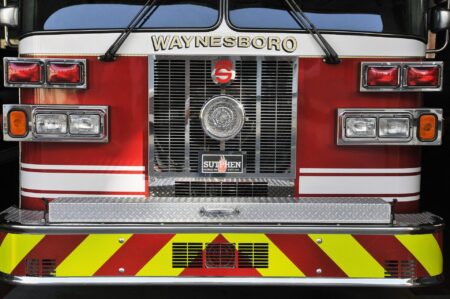HARRISBURG- The Pennsylvania Department of Environmental Protection (DEP) has
declared a Code Red Air Quality Action Day for all of Pennsylvania for fine particulate matter due to smoke from Canadian wildfires.
Air quality conditions degraded overnight as more smoke from the wildfires pushed into
Pennsylvania from Great Lakes region. The average Air Quality Index readings for the entire
day will likely be in the Code Red range, however local conditions could be worse throughout
the day. Residents are encouraged to check www.airnow.gov for their local conditions.
On a Code Red Air Quality Action Day, young children, the elderly, and those with respiratory
problems, such as asthma, emphysema, and bronchitis, are especially vulnerable to the effects
of air pollution and should avoid outdoor activities, and everyone else should reduce prolonged
or heavy exertion.
Concentrations of smoke will likely be high throughout the day in western Pennsylvania and
increasing throughout the day in eastern Pennsylvania.
Smoke due to wildfires in eastern Canada will likely contribute to daily average concentrations
of fine particulate matter in the Code Red range. Residents are encouraged to check
www.airnow.gov for current conditions in their area.
Smoke from the wildfires is expected to impact Pennsylvania air quality throughout Wednesday,
Thursday, and Friday, with some possible relief on Saturday. DEP will continue to update the
forecast.
Conditions will likely be worse in the morning as a natural weather phenomenon called an
atmospheric inversion will keep smoke filled air closer to the surface, and prevent air from
higher elevations to mix with air closer to the ground. Residents are encouraged to check
www.airnow.gov for current conditions in their area.
Fine particulate matter (or PM-2.5) comes in many sizes and shapes and can be made up of
hundreds of different chemicals. Some are emitted directly from a source, such as construction
sites, unpaved roads, fields, smokestacks, or fires. Most particles form in the atmosphere as a
result of complex reactions of chemicals such as sulfur dioxide and nitrogen oxides (called
“precursors”), which are pollutants emitted from power plants, industries, and automobiles.
Residents and businesses within the Air Quality Action Day areas are strongly encouraged to
voluntarily help reduce fine particulate matter air pollution by:
- Avoiding the open burning of leaves, trash, and other materials; and
- Avoiding the use of gas-powered lawn and garden equipment.
The Pennsylvania Department of Health also has recommendations on how to protect yourself
from air pollution.
The U.S. Environmental Protection Agency’s (EPA) Air Quality Index (AQI) provides standardized color codes for forecasting and reporting daily air quality. Green signifies good air quality; Yellow means moderate air quality; Orange represents unhealthy pollution levels for sensitive groups of people; and Red warns of unhealthy pollution levels for all. An Air Quality Action Day is declared when the AQI is forecasted to be Code Orange or higher.






















